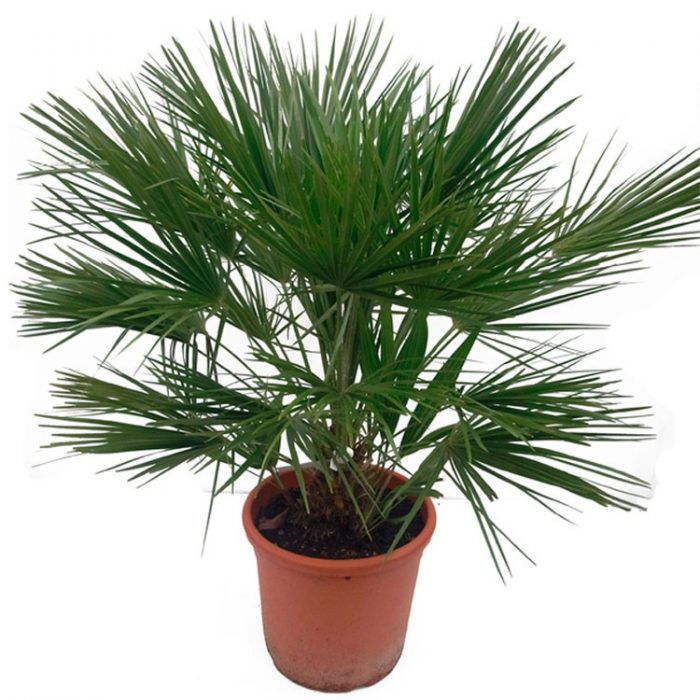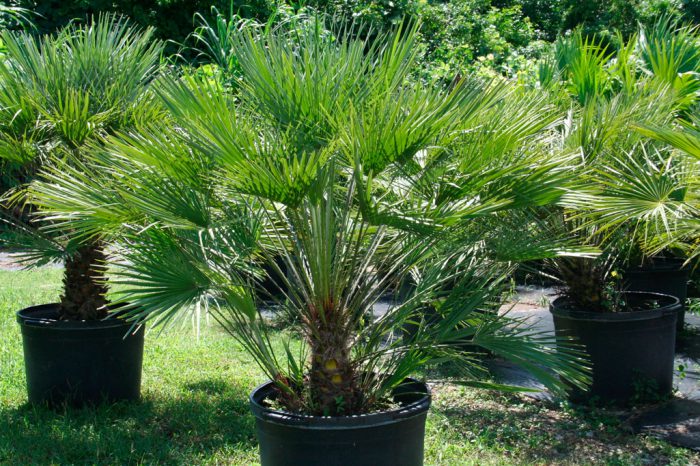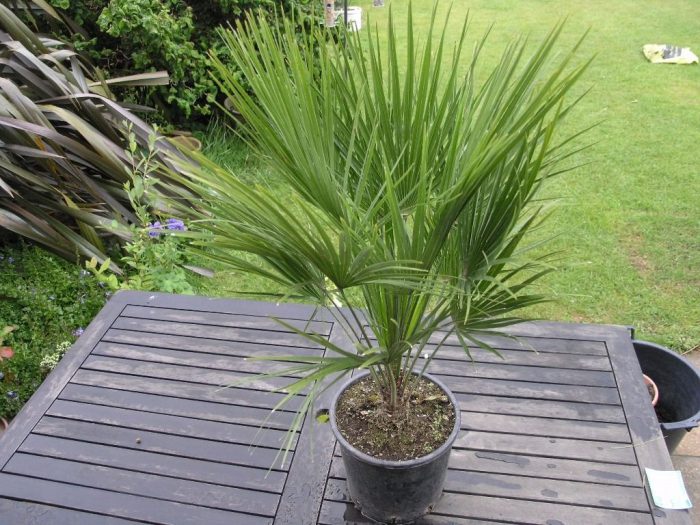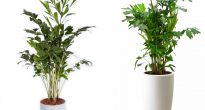Kind of like hamerops (Chamaerops) is directly related to the family of palm (Palmae) or arec (Arecaceae). In this genus, there is only one species - the squat chamerops (Chamaerops humilis). In nature, this plant can be found in North Africa and Europe (most often found in Spain and southern France). It prefers to grow on rocky as well as sandy soils.
In the wild, this palm tree is a multi-stemmed, undersized tree, the trunks of which are quite thick and reach a height of 3 to 5 meters. She also has a thick cap, consisting of fan-shaped leaves. Flowering begins in mid-spring and lasts until June. Flowers collected in branched inflorescences have a bright yellow color.
When grown indoors, such a palm tree reaches a height of 1.5 meters, but it should be borne in mind that it takes up a lot of space in width. Most often, a hamerops has several trunks, which, as a rule, "fall apart" in width. Each of the trunks has a thick cap, consisting of fan-shaped leaves. The diameter of the hard, covered with delicate light hairs, leaves is 30-50 centimeters. They can be painted green-gray or green. When caring for this plant, do not forget that there are curved thorns on the petioles.
This palm is most often grown in foyers, halls or fairly spacious offices. It is also suitable for growing in a conservatory, because it calmly treats sharp temperature fluctuations in winter.
In the summertime, it is recommended to take the palm tree to fresh air. And often it is placed on terraces or verandas.
Content
Home care for hameropsis
Lighting and location selection
Loves bright light and prefers to grow in sunny places. This palm is recommended to be placed near the window opening located in the southern part of the room. Ventilate the room regularly.
Temperature regime
Hamerops is not picky about temperature. It is not harmed by a sharp change in temperature. In the spring and summer, it feels best when the air temperature is from 20 to 26 degrees. In winter, it is recommended to move to a cool place (6-8 degrees). If the room at this time is too warm and low humidity, then the leaves will begin to dry out.
Humidity
The air humidity is not very important for the plant, but in the hot summer months it is recommended to systematically spray it with settled, soft water.In winter, when kept in a cool room, the palm is not sprayed, but only sometimes dust is removed from its foliage with a damp cloth.
How to water
In the summer, watering should be abundant, and in the autumn-winter period, it should be reduced. It is a drought tolerant plant.
Top dressing
You need to fertilize a palm tree from spring to autumn 2 times a month. For this, mineral fertilizers are used. In winter, top dressing is carried out once a month.
Dormant period
In winter, there is a dormant period (plant growth stops). For this period, it is recommended to move it to a well-lit and cool place. Watering should be moderate.
Transplant features
The transplant of young hamerops is carried out in the spring time 1 time in 2 or 3 years. Adult plants are subjected to this procedure only if absolutely necessary. The palm tree has a rather negative attitude towards transplanting, therefore it is recommended to carefully transfer it into a large container, while not destroying the earthen coma. Repotting is best in the spring, but you can do it in the summer months after flowering is over.
Earth mix
In natural conditions, it prefers to grow on rocky and sandy soils. Therefore, the palm tree does not need to be planted in heavy soil that does not dry out for a long time. She also needs good drainage.
For young plants, a soil mixture consisting of humus and sod land, compost, and sand, taken in equal shares, is suitable. An older plant needs to reduce the amount of sand, and add heavier (loamy) sod soil to the substrate.
Reproduction methods
Can be grown from seeds that germinate 2–3 months after planting. Side shoots are not suitable for vegetative propagation. It happens that adult plants give rise to offspring, which sometimes root successfully. They need to be carefully separated during the transplant.
Pests
Root worms can settle, scabbards or spider mites... If the plant was moved to fresh air for the summer, then before returning to the room it must be treated with insecticides for preventive purposes.













